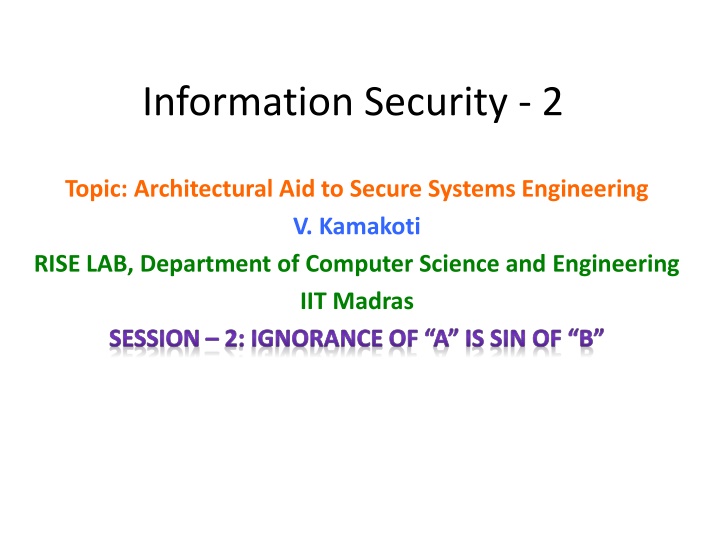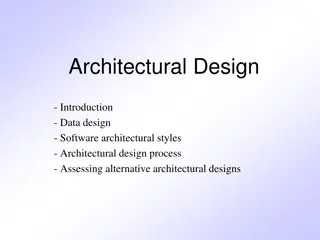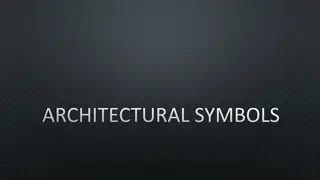Architectural Aid to Secure Systems Engineering: Understanding the Ignorance of A
The session discusses the consequences of user ignorance and developer oversight in software security, highlighting risks in COTS/open source packages and historical vulnerabilities like Borland Interbase 4.0. The evolution of security from software to hardware, the historical context of security issues, and the comparison between MULTICS and modern systems are explored.
Download Presentation

Please find below an Image/Link to download the presentation.
The content on the website is provided AS IS for your information and personal use only. It may not be sold, licensed, or shared on other websites without obtaining consent from the author.If you encounter any issues during the download, it is possible that the publisher has removed the file from their server.
You are allowed to download the files provided on this website for personal or commercial use, subject to the condition that they are used lawfully. All files are the property of their respective owners.
The content on the website is provided AS IS for your information and personal use only. It may not be sold, licensed, or shared on other websites without obtaining consent from the author.
E N D
Presentation Transcript
Information Security - 2 Topic: Architectural Aid to Secure Systems Engineering V. Kamakoti RISE LAB, Department of Computer Science and Engineering IIT Madras SESSION 2: IGNORANCE OF A IS SIN OF B
The Fate of User Ignorance of Developer is the Sin of User Select 100 COTS/open source applications packages randomly Packages with dead code 79 packages Packages with unwanted code (backdoors, etc.) 23 packages Packages with suspicious behaviors 89 packages Packages with possible malicious code 76 packages Known worms, Trojans, rootkits, etc. 21 packages Possible worms, Trojans, rootkits, etc. 69 packages Source: Reifer Consultants presentation at Oct 2007 DHS SwA Forum
Borland Interbase 4.0, 5.0, 6.0 (2001) Hard-coded username politically with the password correct allowed remote access Credentials inserted into the database at startup Support for user-defined functions equates to administrative access on the server Undetected for over seven years Opening the source revealed the backdoor
Why is the Ignorance? Functionality that ensured security moved from software to hardware. Vendor specified Access Rules, DRM, Protocols Need lot more effort to understand Security.
Why is Security an Issue? Shameless Age Selling software needing third-party products to ensure security Security was never by default Thought as an major addition to system modules and sold at premium price Development systems did not have the Luxurious Secure features and so were the software developed using them. Deployment scenarios had the secure features but the ignorant software could not use it to its maximum potential. Paul Karger Thirty years later: Lessons from the MULTICS Security Evaluation The security that existed thirty years before in Multics is not seen in modern day Operating Systems.
Security in Operating Systems The Father of all Operating Systems The MULTICS A widely used Operating System in 1965 - Our previous birth UNIX and its derivatives uses concepts from MULTICS Vulnerability analysis done in 1974 by US Air force - your previous birth and when I was studying second standard
The Comparison The study revealed a NOT-SO-PROMISING scene MULTICS of 1974 was more secure than the current- day OS. Reason: Primary goal of MULTICS in 1965 was security It started as a computer utility and realized a need for protecting conflicting interests among the users.
What went wrong? Personal computers and workstations Incorrect conclusion that security is NOT important With growth of internet, security became important, but all decisions made assuming less importance for security, the ill-founded decisions, haunt us. The preventive approach to security based on authentication and secure communication is weak. It lacks foundation
Strength of MULTICS No buffer overflows What is buffer overflow? How it can lead to vulnerabilities?
End of Session-2 Thank You























